My philosophy of patient care is based on the following 3 principles
-
CHILDREN ARE NOT SMALL ADULTS
-
TEAM WORK
-
EMPOWERING PARENTS



When a child is on more than 2 drugs and still continues to have Epilepsy , it is called Drug resistant Epilepsy.
Craniosynostosis is a disorder of the formation of the skull and facial bones leading to abnormal shape of the head and face.
These disorders are a due to defect in the formation of the spinal cord and surrounding tissues during the foetal stage of life.
Children can have various vascular conditions like Moyamoya disease, AV Malformations, aneurysms, Vein of galen malformations etc.
Movement disorders such as dystonia can affect the quality of life and survival in children.

Epilepsy happens as a result of abnormal electrical brain activity, also known as a seizure, kind of like an electrical storm inside your head.
A brain tumor is an abnormal growth of cells within the brain that can be benign (non-cancerous) or malignant (cancerous) and can disrupt brain function.
A spinal tumor is an abnormal growth of cells within or surrounding your spinal cord and/or spinal column. Most spinal tumors result from cancer metastasis.
Disorders of the skull and facial bones are called craniofacial anomalies, which are diverse congenital or acquired conditions affecting the head and face.
Hydrocephalus is a neurological disorder where an excess of cerebrospinal fluid (CSF) builds up in the brain's ventricles, causing harmful pressure on brain tissue.
Spasticity is a motor disorder that results from damage to the brain or spinal cord, leading to stiff muscles and increased muscle tone, often causing involuntary spasms and overactive reflexes.
Vascular diseases are very different from the adult population. Children can have various vascular conditions like Moyamoya disease, AV Malformations, aneurysms, Vein of galen malformations etc.
A movement disorder is a neurological condition affecting coordination and resulting in either excessive, involuntary movements (like tremors or jerks) or slow, reduced voluntary movements.
2000 +
Surgeries
15 +
Years of Experience


Just One Call Away at Our Affiliated Hospitals
Equipped with the Latest Neuromicroscope, Navigation, and Neurophysiological Monitoring Systems
Trusted hands with vast experience in advanced and critical surgeries.









A paediatric neurosurgeon treats brain and spine problems in children, including epilepsy, brain tumors, craniosynostosis, hydrocephalus, spinal dysraphisms, vascular conditions like moyamoya disease, dystonia, spasticity etc.
With the help of modern technology and the support of capable neuro-anesthetists and paediatric ICU experts , a paediatric neurosurgeon can perform surgeries can on children as early as the 1st day of their life. Overall, it is safe to operate on infants, toddlers and young children if SOPs for safety, infection control and peri-operative care are stringent and tested.
Epilepsy surgery controls seizures caused by abnormal brain activity. If medicines don’t work well, surgery can often reduce or eliminate seizures, improving your child's quality of life and development. It involves intraoperative mapping and testing on the brain. Awake brain surgeries can also be done in well selected cases when necessary.
Treatment varies based on the tumor type, size, and location. Surgery is often the first step to remove or reduce the tumor, with additional therapies like chemotherapy or radiation if necessary. The aim is to remove the tumor safely while preserving brain function. Not all brain tumours have a bad prognosis and therfeore each child with a brain tumour should be given a fair chance.
Hydrocephalus occurs when excess fluid builds up in the brain. It can present as an emergency where it is life threatening. Early diagnosis and timely intervention can not only save lives but also ensure that neuro-development and head size do not take a hit.
Spinal dysraphisms are birth defects where the spine doesn’t develop properly. Surgery is performed to repair the defect, prevent infections, protect the spinal cord and prevent neurological impairment . Early diagnosisn and is critical in children with these disorders.
SDR is a procedure for children with cerebral palsy who have stiff muscles. it is generally done between 3-10 years of age especially in children who walk independently or with minor support. It cuts specific nerves to reduce muscle spasticity, helping children move more easily and perform daily activities better. Aggressive physiotherapy is critical in ensuring good outcomes.
Moyamoya disease affects blood flow in the brain, causing strokes or weakness. Surgery improves blood flow and prevents strokes. Early intervention can significantly improve outcomes. Depending on the age of the patient various direct and indirect bypass surgeries can be done on the brain.
Craniosynostosis is a condition which involves an abnormality of head and face shape. Syndromic cases can have raised pressure in the brain, bulging eyeballs, airway and breathing issues needing multiple surgeries. Simple non syndromic cases are treated with a single surgery with or without a helmet.
Support your child with patience and reassurance. Explain procedures in simple words, stay positive, and follow your doctor’s advice. Sharing concerns with the medical team ensures your child receives the best care.
